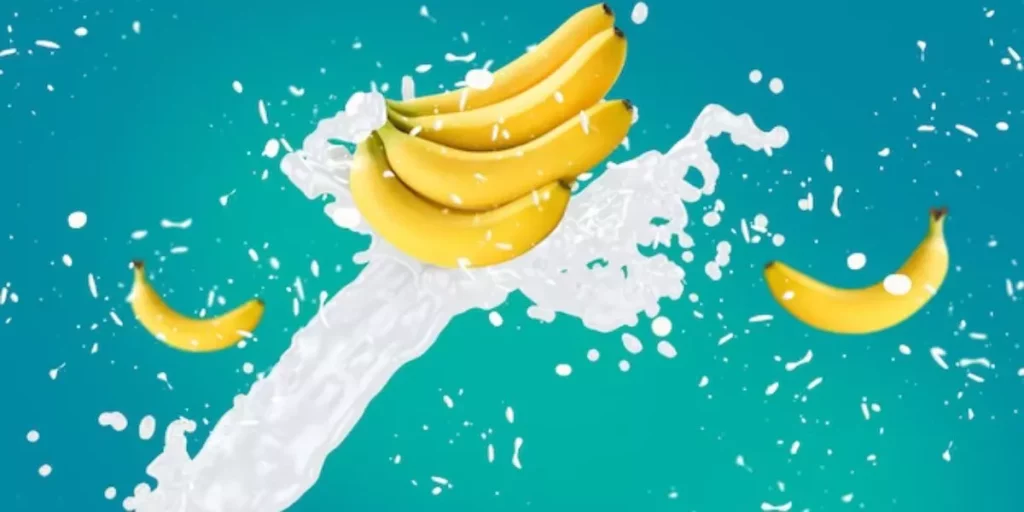Do bananas float: Discover the Science Behind Floating Bananas.
The science behind why bananas can float and how it’s possible for these dense fruits to stay afloat.
Let’s dive in and see what we can find out! Do bananas float
Bananas, like most fruits, generally float in water due to their low density.
This buoyancy is attributed to the air pockets present within the fruit’s structure. When placed in water, the air-filled cells allow the banana to float.
This interesting phenomenon showcases the principles of density and displacement in action
Does a Banana Float In Water?
Yes, bananas do float in water. The brominated compounds present in bananas are lighter than water, making them buoyant when submerged.
This is because bananas are composed of approximately 75% water, which makes them more dense than water. As a result, the air pockets between the inside and the outside of the banana cause it to float in water.
This is the same principle that makes apples and other fibrous fruits float in water. It is also important to note that the size and type of banana can impact how much it floats. A large, ripe banana may float more easily than a small, firm green banana.
The Science Behind Bananas Floating in Water

Something as simple as floating bananas in water has a scientific explanation. Bananas are usually less dense than water—meaning they take up a larger space in the same amount of water, giving them some buoyancy. The dense parts of bananas are from their starch, cellulose, and minerals. This is opposed to the hydrogen and oxygen in water, which are lighter and make it less dense than a banana.
The skin of a banana is made of cellulose, and cellulose is not only lighter but it is also porous—meaning air can be trapped inside of it. The air bubbles in the skin form tiny air pockets called flotation cells, which act similarly to life vests. Combined with the fact that the banana is less dense than water, it is able to float.
Overall, the science behind why a banana floats in water is because it is less dense than the water and its skin contains flotation cells, or air pockets, that can keep it afloat. The combination of the two is what makes a banana float in water.
The Weight of a Banana & Do bananas float?
Bananas are often thought of as being one of the lightest, least dense fruits around, but surprisingly enough, the typical banana can weigh surprisingly heavy. The average banana weighs between 100 and 120 grams. That’s just over 4 ounces. Some large bananas, mostly found in warmer climates, can weigh up to 200 grams, which is about 7 ounces.
Reasons Why Bananas Float in Water – Explanation

Bananas float in water because they are less dense than the water. This means that the banana is actually more buoyant than the water, causing it to rise up out of the water and float. This happens because the banana’s stems, cores, and skins are all made up of air and fiber. Both are much less dense than the water, allowing the banana to stay afloat.
In addition, the water is filled with dissolved salts and minerals. These increase the water’s density, further making it even easier for the banana to float.
The reason why other types of fruits (like apples) don’t float is because they have a higher density than water. When you immerse an apple in a glass of water, it will sink to the bottom because it is denser than the water.
In short, bananas float in water because they are much less dense than the water. The air and fiber that the banana is made of make it possible for the banana to stay afloat.
Understanding the Density of Bananas
Understanding the Density of Bananas
A. Description of the Composition and Density of Bananas: Bananas are fruit composed primarily of water and carbohydrates. However, they also contain smaller amounts of fat, proteins, vitamins, and minerals. The average density of a fresh banana is approximately 0.88 g/cm3. This means that the average banana’s mass is approximately 88% water, given an average weight of 118 grams for a medium-sized banana. Density can be affected by a variety of factors such as the ripeness and age of the banana.
B. Explanation of How the Density of Bananas May Influence Their Buoyancy in Water: The factor that affects whether a banana will float in water is the ability of the banana to displace enough water to remain afloat. As the density of a banana increases as it ripens, the buoyancy and ability of the banana to float decreases proportionally. The more density a banana has, the less likely it is to remain afloat. Therefore, ripe or overripe bananas are less likely to float in water than underripe bananas.
Conducting the Banana Float Test

- Choose a bowl of water or a larger container to perform the experiment in.
- Place a banana in the water.
- Observe whether or not the banana floats. If the banana floats, it means that it has some air pockets in its composition which will cause it to float.
- If the banana does not float, it means that it has more density than the water and will sink.
- For a more detailed study, experiment with other fruits such as apples, oranges, or pears, in the same bowl of water.
- Record and compare the different results and draw your own conclusions.
The banana float test is a great way to learn about the physical properties of different fruits and how they interact with water. With this experiment, you can have a hands-on experience that can help you better understand how surface tension and density work together. Try it out and have fun!
Know more about banana
Bananas are one of nature’s most nutritious fruits, with a variety of benefits for your overall health. Not only are they an excellent source of fiber, potassium, and several other vitamins and minerals, but bananas also contain compounds that can help support your immune system, improve eye health, and reduce the risk of certain chronic diseases.
One of the greatest health benefits of eating bananas is that they are a good source of dietary fiber. Fibre is essential for good digestion and can help to reduce the risk of constipation, improving digestive health and promoting regularity. The presence of fiber can also help to reduce bad cholesterol and control blood sugar levels.
Bananas are also a great source of potassium, an essential mineral for maintaining healthy nerve and muscle function. Getting enough potassium in your diet can reduce the risk of high blood pressure and is associated with a lower risk of stroke and heart disease. Potassium can also help to regulate the electrolyte balance in your body and maintain healthy blood pressure levels.
Bananas are also a good source of several essential vitamins, including vitamin B6, vitamin C, and vitamin A. Vitamin B6 is essential for nerve and brain development, and it also helps to regulate the production of red blood
Conclusion
Bananas are a beloved and nutritious fruit, so it can be interesting to find out whether or not they float in water. The answer is yes, bananas do float in water. This is because bananas contain a lot of air inside their peels, making them less dense than water, which allows them to float. Floating bananas can be enjoyed in a refreshing and unique way in the pool or at the beach.
However, it should be noted that it is not recommended to eat any fruit that has been in contaminated water. Overall, bananas are a delightful snack and can even float in water – just be sure to stay safe if you choose to take a dip in the pool with them!






